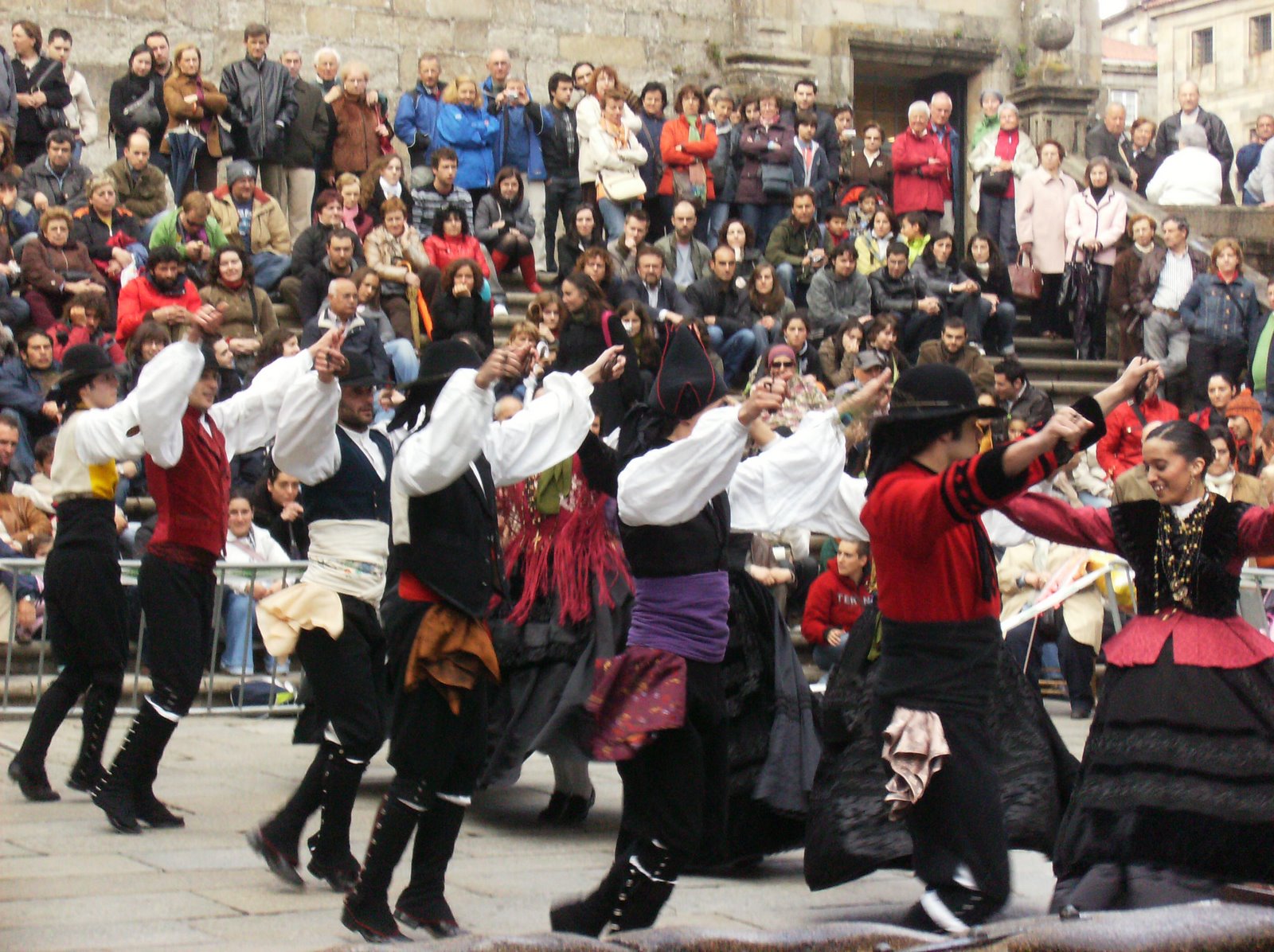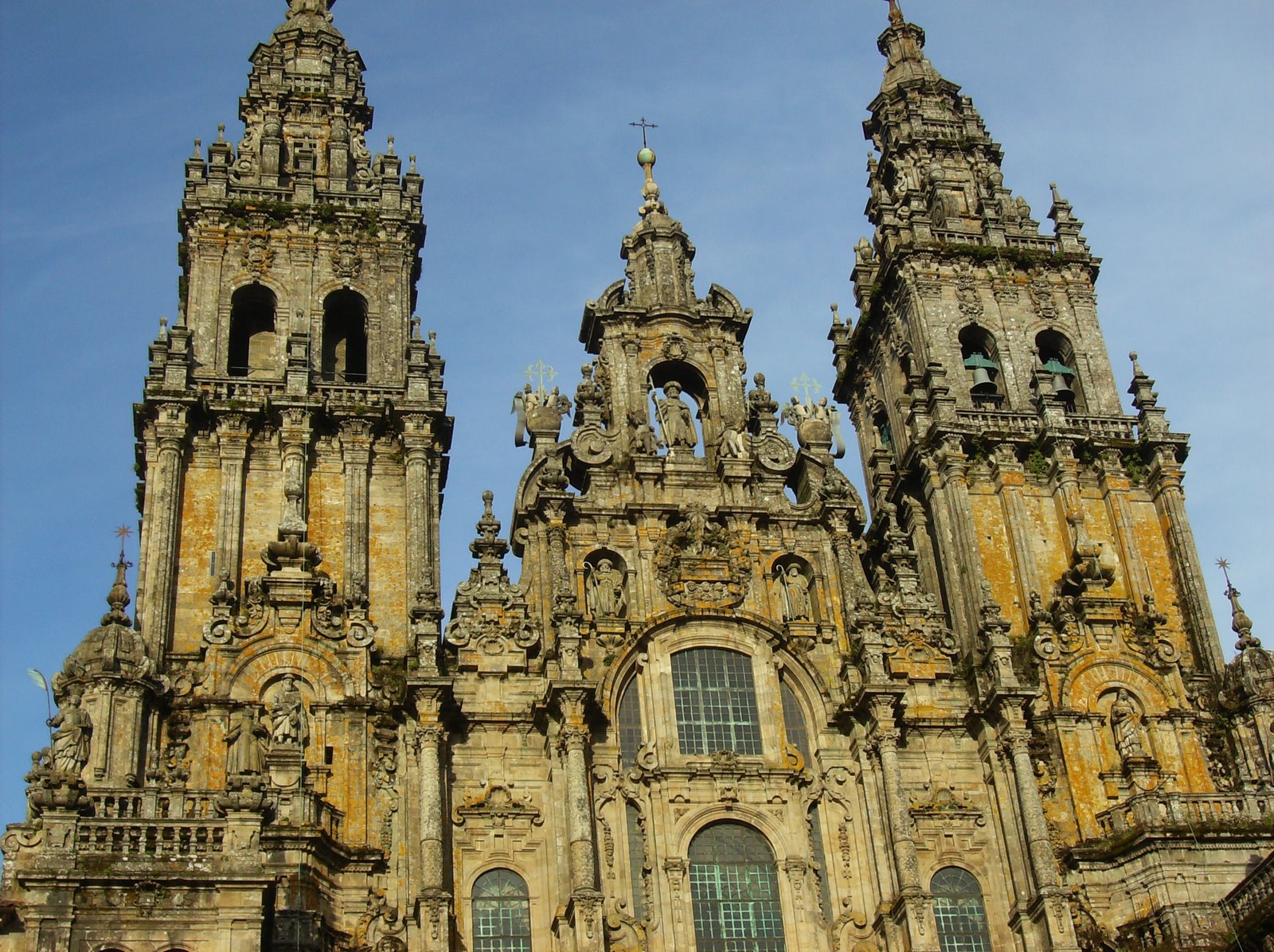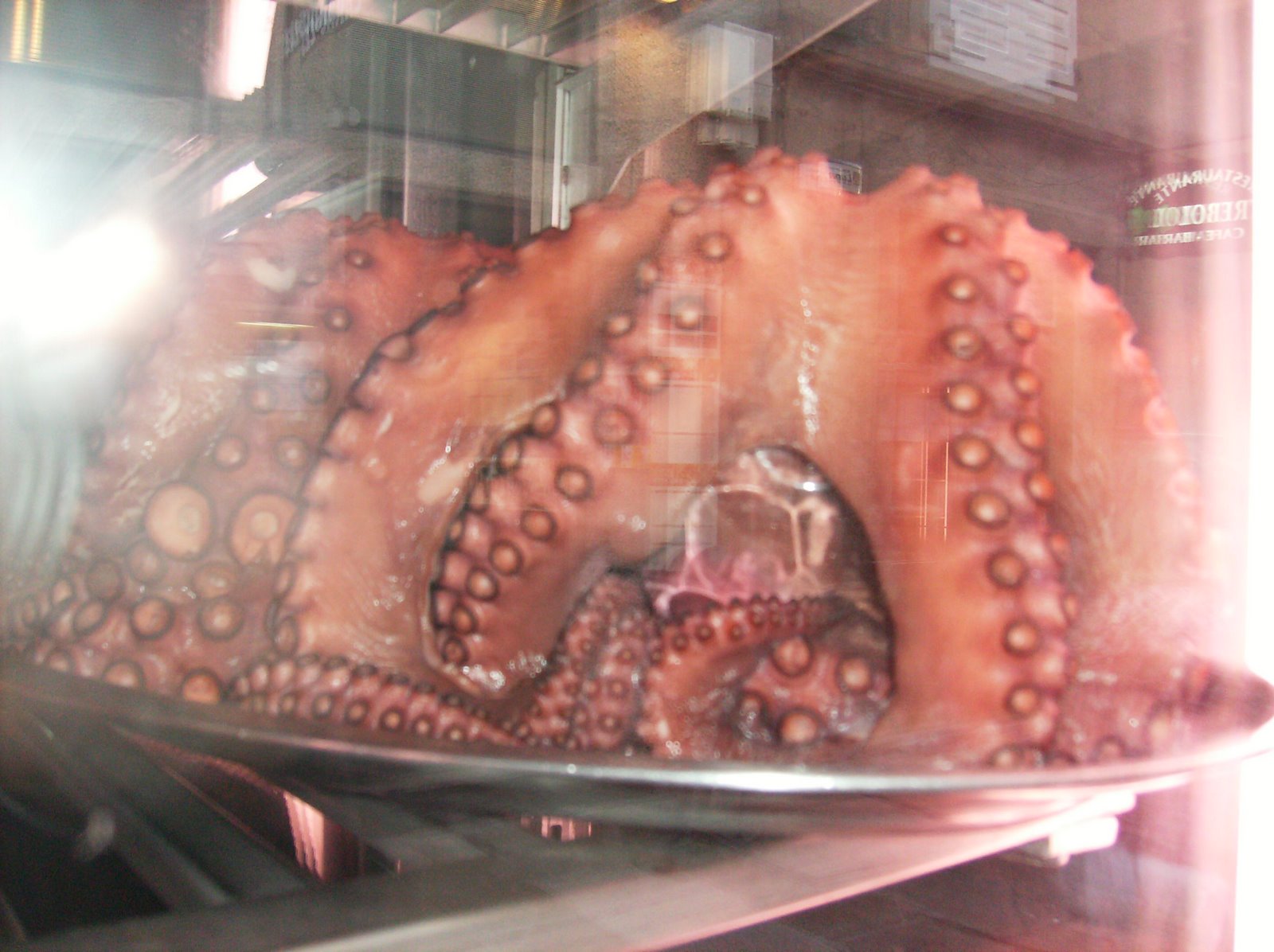I have the belief that I should go to every country once before I go to another place again. The same goes for Spain. I’ve been all over this amazing and varied place, but I finally got the chance to travel to Celtic Spain – the place where green valleys meet the ragged sea and bagpipes are more common than flamenco guitars. I’m always puzzled how an hour-long plane ride to somewhere else in Spain can transport me so far away from Sevilla and everything quintessentially Spanish.
Kate, Christene and I hopped on a plane during the long weekend here in Andalucía (and most of Spain) to Galicia, the northwest corner of Spain, just above Portugal. To people like the two of them, who have lived all of their Spanish lives in Sevilla, it was like going to another country. The airport is up high in the hills overlooking the Atlantic, so we could see for miles. Normally the country is wet and damp (If you’ve seen Mar Adentro/the Sea Within, you’ll be familiar with the weather in this part), but we lucked out and got just a three-minute drizzle on our way into town. As we wound our way down the hills, it became apparent why A Coruna, the largest city in the region, is called “The Crystal City” – the rows of tightly packed windows reflect the afternoon sunshine, nearly blinding you. The city is located on a peninsula towards the northernmost point. Kate met a guy named Javi on couch surfing, and he took us to a place for lunch. The bar, called La Bombilla (lightbulb for you gringos) is a local favorite, with cheap and tasty tapas. I fell in love with chorizo, a spicy blood sausage, alllll over again. And the beer here is a bit tastier than the Sevillian favorite, Cruzcampo, too. After walking a bit through the city, we took a train to nearby Santiago de Compostela. The train ride though the Rias Altas was incredible – fertile green grass-covered hills and valleys, and small homes peeked out from them. We saw livestock of all kinds before taking a short nap (I went to bed at 5 am the night before, taking full advantage of the puente weekend!).
Arriving to Santiago was fulfilling a dream. I’ve wanted to come to the city ever since I’d heard about the Camino de Santiago, a pilgrimage across northern Spain. People from all over the world walk or bike to the place where St. James’ remains reportedly lie, stopping to sleep in monasteries or small villages. From Roncesvalles, the furthermost western point in the Spain-leg of the journey, takes just over a month. Evidence of pilgrims was everywhere – from seashells (a symbol of the pilgrim) to walking sticks to people dressed like they were going to scale Patagonia. Everyone we met, with the exception of some like 18 year olds at a disco, were just completing the trek. Our first stop was the giant cathedral of St. James, said to have been built over the spot where a farmer once saw a cluster of stars in a field (the Campo de Estrellas = campostela in Gallego, the dialect in the area).
The town surrounding it is considered one of the UNESCO world heritage cities, as Spain has one of the highest numbers of sites in the world. It’s stunning. All the buildings are stone, arcaded and built along narrow streets. Every now and then, a plaza pops up and it was full of people mingling or having a drink or tapeando. The weather is normally cold and rainy, but we lucked out and had warm (22-23 degrees celsius) and sunny days. Upon walking to the cathedral, we ran into a small parade of people dressed in costumes that looked like victorian skirts paired with farmers clothes. Many carried drums and bagpipes. Spain’s first invaders were the Celts, and much of northwest Spain retains its celtic heritage. We watched some dancing, where the men danced around women as if to court them on the steps of the monstrous and intricate cathedral, the focal point of the camino and of the city. Inside are a stunning nave constructed out of gold, a huge incense burner used during special pilgrim masses and a life-sized bust of St. James. Some woman told us we had to hug it and it would bring us good fortune, so we pulled a Blarney Stone-esque move and each wrapped our arms around the saint for good luck’s sake.
The sun was beginning to set, so we walked around the city as the sun lit up all of the buildings, including the spires of the cathedral. It was breathtaking. Our tummies were hungry, so we looked for a bar along a street full of them, advertising food, mostly seafood. Strange looking sea animals, mostly overturned octupi, were staring back at us. Three different people suggested a bar called O’Gato Negro, so we waited nearly 30 minutes for a table there. The bar looked like a cave with a few green tables and stools against the walls. Most people just ate at the bar, dropping napkins and toothpicks on the floor as they did so. We ordered typical chorizo al vino (a blood sausage in a thick, red sauce), pan rústico, Galician cheese and clams. For drinks, we got a half litre of white wine from the area, which we drank out of saucers! We paid as much for the ambience of being surrounded by pilgrims and quick talking Galicians as we did for the food, but that’s the way it goes.
I really didnt have the coño para fiesta, but we went out anyway. After all, it was a fiesta day, perfect for partying! We walked along the road where we ate lunch, stopping in the only bar that had people in it. We ordered another bottle of wine for 2E and sat playing drinking games with the group of 18 year olds next to us. They all looked like my students!! They took us to a discoteca, where I nearly died of exhaustion. I made myself go home early, back to our crappy hostel with bugs on the wall and the creepy, strange British caretaker.
The next morning, we slept in a bit and bid farewell to Creepman, then walked through the other historic parts of the city. There isn’t much to see aside from the cathedral, but we ate a lot of free samples of Tarta de Santiago and enjoyed the unusual sun. From there, we took the train back to A Coruna. We got ahold of Javi, who invited us to his football game. We walked practically through the whole city to find the soccer pitches, which were right next to A Coruna’s most famous sight, La Torre de Hercules, he oldest working Roman Lighthouse. I don’t really know if the boys won or not, but we didn’t care. Afterwards, he invited us out with his friends. The nightlife in A Corñna is SO different from Seville – the clubs and bars are much more laid back, and good thing, too. I didn’t bother bringing a pair of heels. At first, the guys Javi was with were kind of strange, but after a few beers, they got normal?? I confided in this tío, Gabi, who ended up being a HUGE creep when he was drunk. All of the sudden, Javi sketched out on all of us and got super weird. Whatever, we had fun regardless. At least I know Christine did!!
The next day, after getting up late AGAIN, we went to see some of the museums. A Coruna is the capital of the province of Galicia, so there are museums of science, men and a huge aquarium. The city is known as the Crystal City due to the tightly packed windows that light up with the sun. It’s out on a peninsula and gets sun from all sides. Mainly, we just walked around getting to know the city.








Speak Your Mind